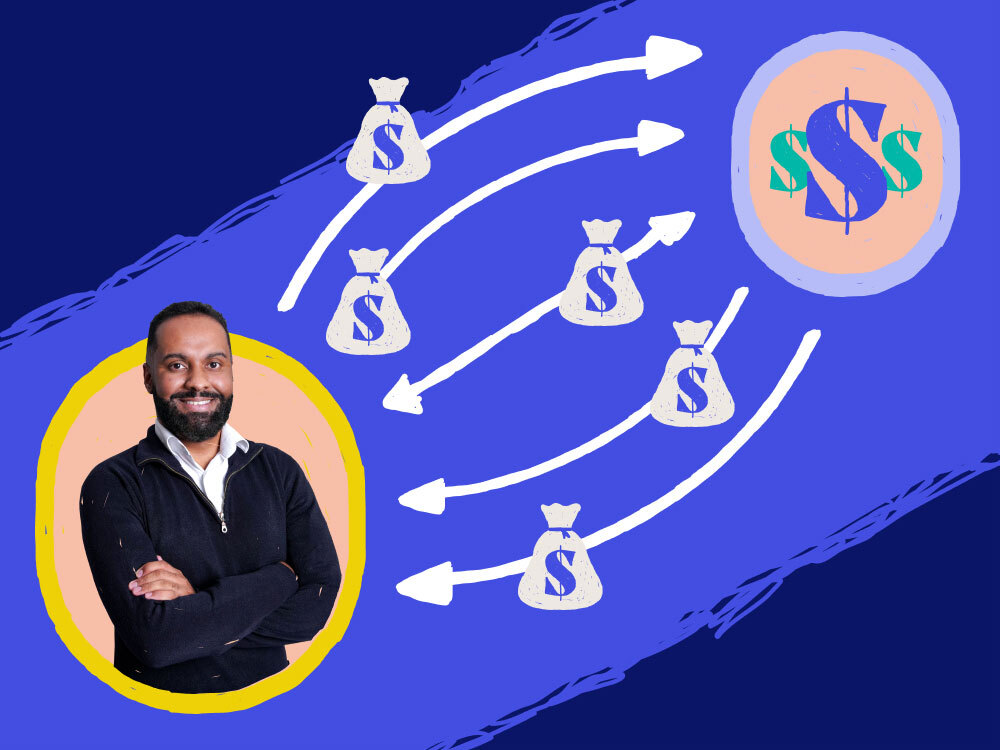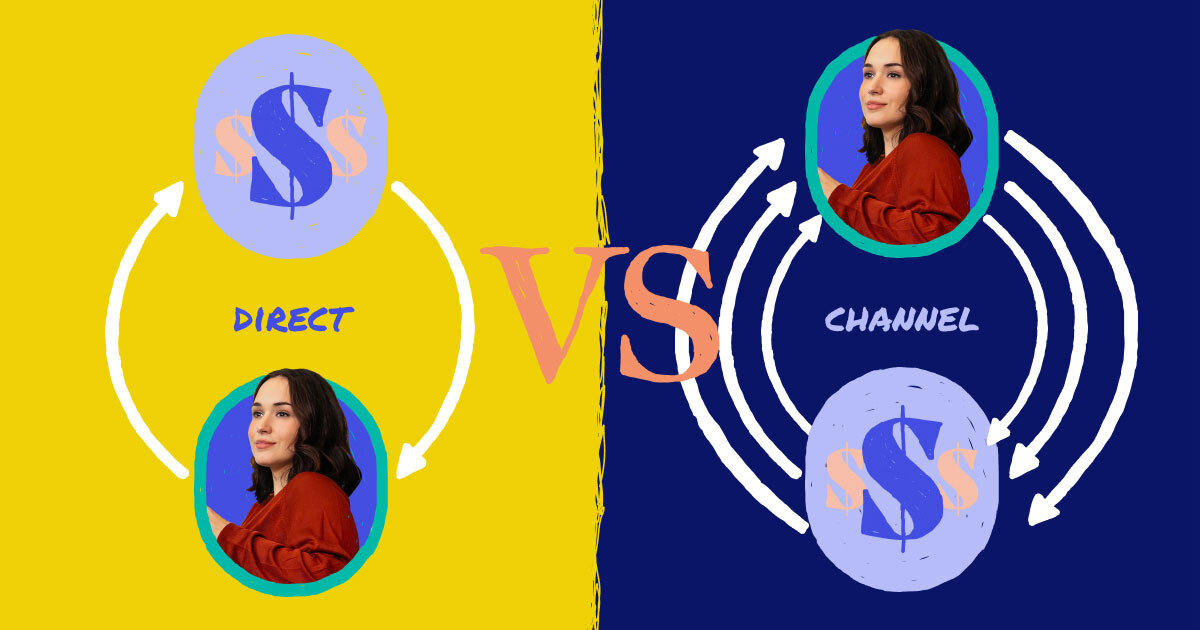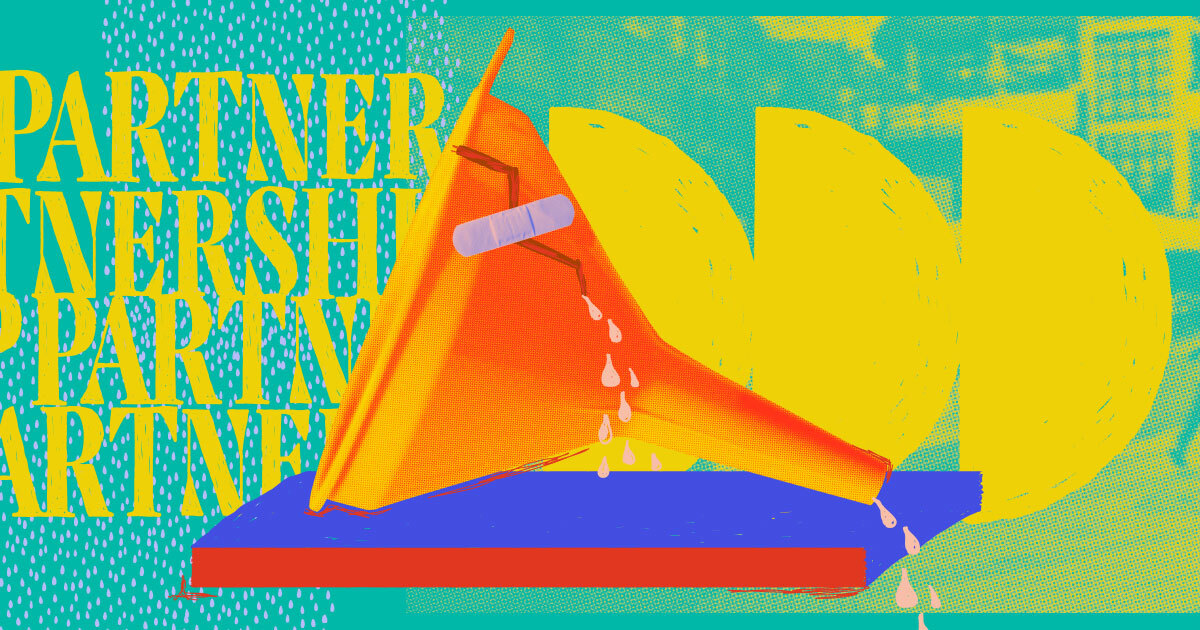Sales are key to business success. That’s nothing new. What’s evolving is that there are different ways to sell to customers depending on what works for your business and for them, especially in B2B SaaS. Traditionally, direct sales was the way to go. Now, in the age of the tech ecosystem, channel sales is becoming an increasingly preferred way to sell. Both sales strategies work, but what are they, how labor intensive is each, and how do the sales and customer journeys differ? Let’s get into channel sales vs. direct sales and what the key differences are in 2022.
What are direct sales and how do they work?
As the name suggests, direct sales is when a company sells directly to their customer base without a middleman or retailer, using in-house sales reps. There is an immediate relationship between the customer and the company, whether that is through face-to-face meetings, phone calls, social media, or video conferences.
In direct sales, the company manages the entire sales cycle. That includes creating the product, hiring a sales team, and developing marketing, sales, and customer service strategies. It can be as simple as setting up a website, working directly with affiliates, or targeting their audience by having a presence at events. In SaaS, you’ll usually see direct sales performed through eCommerce sites, over the phone, or out in the field.
What are channel sales and how do they work?
Channel sales are different from direct sales as there is third-party involvement in the sales cycle, making them indirect sales at their heart. The company with the product will work with channel sales partners like resellers and distributors who will sell the product to customers. There is no immediate connection between the product owner and the customer since the customer only interacts with the reseller or distributor. In SaaS, you’ll likely encounter channel sales running through reseller channels, OEM channels, or service partners.
Unlike direct sales, the company doesn’t have to manage the entire sales cycle, but it should still have a good sales channel strategy. A company providing its products through a reseller or distributor should consider the needs of those parties to make sure the product is created, designed, packaged, and marketed in a way that makes sense for them to represent. More on this later. First, let's get into a few comparisons:
The differences between direct sales and channel sales
Let's break down some of the key differences between these sales tactics:
Direct sales
- Single-level sales where sales associates contact potential customers individually. This can be via different channels including phone, video calls, or even conferences.
- Group sales wherein the sales associate gathers a group of people for the sales process.
- Multi-level sales wherein the top sales associate will have other associates working under them.
- Direct social media sales where the company has paid for audience targeting and made it easy for the customer to scroll and purchase through the platform.
Channel sales
- Resellers who purchase your product and sell it at a discounted price.
- Affiliate partners who promote and sell your product for a cut of generated sales.
- Wholesalers who buy the product in bulk and sell it to their customers.
- Value-added resellers who buy your product then bundle and sell it with similar products or additional services.
- Agents who sell your product for a commission — like the real-world version of affiliate partners.
Related: Top growth channel tactics right now.

The pros and cons of direct sales
The direct sales cycle has its pros and cons, so consider these if you're considering using this sales strategy:
Pros
- Control of the entire sales cycle. The company manages everything: hiring, marketing, training, and customer service.
- The company does keep all the profits from the product as they don’t have to pay affiliate fees or commissions. This also makes it easier to forecast revenues.
- Immediate access to customer feedback since there is a direct line of contact.
- Faster development. Since the company owns the entire cycle, it can iterate faster.
- No need to find and vet the right affiliate partner or reseller relationship.
Cons
- It’s harder to scale when you own the entire process! The company is responsible for all the hiring, marketing, research, feedback, iteration, and customer service.
- Higher costs as the company is responsible for everything from the hiring process to the CRM platform.
- Harder to enter new markets and reach new customers compared to channel sales, which may have affiliates already in those spaces.
The pros and cons of channel sales
Just like direct sales, channel sales has its pros and cons to consider:
Pros
- More cost-effective. As we know, outsourcing is a tested way for a company to reduce costs. They can offload the costs to sell the product to their vendors instead of hiring more salespeople.
- Easier to enter new markets and reach target markets as it’s simply a matter of finding new affiliate partners already established in that market.
- Easier to scale as you can find new third parties to help with the process.
Cons
- Less control over revenue forecasting as it depends on reporting from vendors and the transparency of the process.
- Less control over the marketing and selling of the product. While the company can train and educate its vendors on the products, it still can’t control the entire sales cycle when it’s being managed by another entity.
- Reduced revenue for the company as vendors may require discounts as part of the agreement. Affiliate commissions also need to be paid.
See more: How working from home has changed software purchasing.

What is a channel sales strategy?
A channel sales strategy is the process of working with third-party vendors to increase market share so more customers can purchase the product.
Creating the strategy is a multi-step process. After assessing that channel sales are the right growth strategy, a company should:
- Vet third-party vendors to see if they are the right fit. This means defining your partner profile with ideal business attributes and then ensuring potential partners match your profile.
- Train your vendors. You want them to be enthusiastic and knowledgeable about your product. Start by letting them know the benefits of working with your products because everyone wants to know what they’ll get out of a business relationship. Offer ongoing training, provide access to success metrics and maintain transparency with updates and communications. This ongoing management is why you might want to hire a channel sales manager or partnership manager to find the right partners and maintain the partner relationships.
- Empower your vendors to adapt strategies as they sell your product (within brand guidelines, of course). Learning is a two-way street and third-party vendors can provide learning and customer feedback that can be used to adapt channel sales strategies.
Which sales strategy is best for your business?
Deciding whether direct sales or channel sales are right for you isn’t always straightforward. it depends on your business model, product, and target audience. It might make sense to stick with a direct sales strategy if you’re looking for immediate feedback from customers, have a robust in-house sales team, or are operating in a small location and not looking to scale. Channel sales would work when you’re looking to scale, access new distribution channels, and manage costs. Instead of hitting the phones or waiting for customers to find your eCommerce site, channel sales ensure your product is available from multiple vendors across varied locations. Channel sales are also a natural choice if you’re looking to join or build out an ecosystem, since you’ll be working within a network of affiliates, referral partners, and/or resellers depending on your product.
That said, there’s no reason why a company can’t use both direct and channel sales or move from one format to another. By using both strategies where they benefit your business, all potential customer discovery and revenue avenues are covered.







.jpg)



